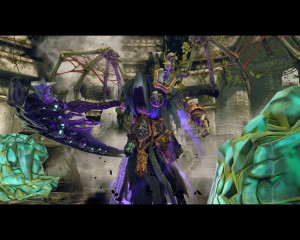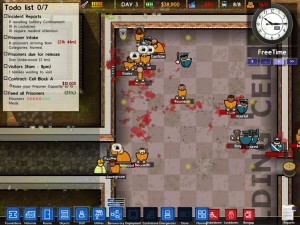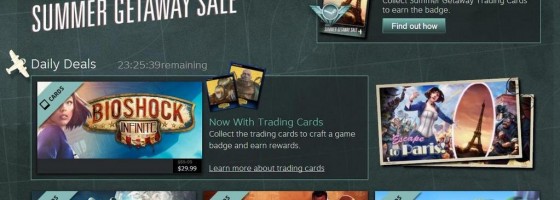As digital distribution became a prominent factor of the Game Industry it lead to video games becoming cheaper to buy and more accessible to purchase. And as a result, the general consumer’s perception of video game pricing has been affected.
For today’s post, we’re going to talk about the different pricing thresholds that are currently in the Game Industry and what they mean for when it’s time to price your game.
Pay to Play:
Let’s begin with a recent addition thanks to crowd funding taking off from last year:
$ 100+ — Super Fan Price: To get people to donate money to crowd funded projects, many designers love to make all kinds of rewards at various levels of awesomeness. Generally speaking from 0 to 50 dollars, the player gets the game and various knickknacks that could have been preorder bonuses.
But, once we get into the triple digits, designers usually have something special in mind: From custom artwork, putting yourself in the game and then some. And we’re not even going to talk about the $1000+ rewards that most often deal with visiting the designers.
Because crowd funding is still a relatively young concept in the Game Industry, there isn’t a lot of information to go on with consumer perception at this level. But, people who are spending this amount or more on a single game are the super fans, or in other words: Whales.
These people would probably buy the game on day one at full price without a second thought. Incidentally, because of the hardcore nature of these fans, they are more likely to forgive bugs or delays of the game, by the fact that they are so excited at the prospect of playing the game in the first place.
$50-80 — Full Retail:
At this level, this is the general pricing of what’s considered a retail release of an AAA game. At the higher end of the spectrum usually includes the collector’s or special edition of the game.
Most console games are released at the $60 mark which is currently considered the MSRP for most retail releases. PC games are weird in this sense as they have been released from anywhere from $40 to $60 retail. Usually the $60 price tag is reserved for PC games from major developers like UBI Soft, EA and Activision.
Gamers are very critical at this pricing as it’s usually considered reserved for the cream of the crop and when a game is released with bugs or missing features, people are going to raise hell. Just as if someone who buys a new car finds that the engine stops working right out of the lot.

Darksiders 2 was one of many retail games released that while it scored decent reviews, didn’t sell enough copies to turn a profit.
One of the reasons why so many gamers are fed up with AAA games has to do with the pricing. We’ve seen games get more expensive thanks to DLC add-ons, but the general amount of content that we see in AAA games has remained the same.
When we hear about commercial flops in the Game Industry, most of the time it’s from a $60 retail game that for whatever reason, fails to turn a profit.
The problem is that most games released at this level, honestly aren’t worth that price, whether it’s because the gameplay wasn’t that refined, bugs or simply that the game wasn’t that good.
$35 – 40 — AA Pricing:
Obviously there are more games than just the AAA massive titles released on the retail market and this level of pricing is where they usually fit. This tier is reserved for developers who make games that may not have the notoriety of something like Skyrim or EA, or games released on secondary platforms like the 3DS and PSP Vita.
Companies like Atlus and Nis America usually thrive at this level of pricing by releasing quality games that don’t scream the mass market appeal of titles from bigger studios.
And that’s really the definition of this tier: High quality games that lack the bang for your buck that you see at the AAA level. You’re not going to get games with full voiceovers or that use the latest Unreal Engine.
While consumers are still critical of having to spend this much on games, they are far willing to let minor bugs go compared to retail games.
$20 – 30 — Premium Indie or Bargain AAA:
At this tier we begin to see where high end Indie titles usually end up. Interestingly, during the last decade this price tier was considered the “shovel ware” tier for low quality games that were usually rushed out.
But following the rise of game sales and the general deprecation of game pricing, that opinion changed.
For Indie games, this can be a tough sale, as with so many titles from Indie developers on the market, making one worth about half the price of a retail game can be tough in the eyes of the consumer. And just like with retail game pricing, any bugs or problems with your game is going to anger gamers as they spent a premium price for your game.

Prison Architect’s $30 price tag for alpha is viewed as a steep price, which is why the plan is for the retail version to drop down to something closer to other Indie games.
On the other hand, this is what is considered the absolute bargain for recently released games. Having a $60 game discounted to this area during a steam sale or general sale, is a good way to get an influx of consumers to buy your game.
$10 – 15 — ISRP:
At this pricing is what I like to call the Indie Suggested Retail Price or ISRP, as this is the normal pricing for most Indie titles. This tier is interesting as we’re now getting to the point of impulse territory for a lot of people.
An AAA or AA game that falls to this price is usually a no brainer for a lot of people and realistically, most retail games will not get any cheaper outside of a holiday sale.
Here, Indie titles are treated much in the same way as AA games — You’re paying for a game that might not have the best production values, but usually makes up for it with gameplay.
With the rise of DLC as opposed to full expansions, $10 is also what’s considered high end for DLC.
$7 – Below — Sale:
This tier is usually reserved for games on sale. This is where we see the impulse buy threshold for many people. For me personally, mine is $5 or less unless it’s a game that I have no interest in playing.
As we’ve become so flooded with game releases, many gamers these days just wait for games to drop to this point. And in turn, has had a noticeable affect on the profit from AAA developers who need people spending $50+ in order to make back what they spent on development.
Some gamers, who see a game released at $7, will still wait for the “better deal” of a sale.
For most DLC packs, we usually see their pricing somewhere within this category with obviously the higher price, means more content for the player.
Now there are two other areas of game pricing that we’re not going to talk about: the psychology of humble bundles/donations and mobile pricing. The former, because the added involvement of charity and the psychology that goes into that would be too much to talk about in this piece.
And the latter is simply because I’m not a mobile gamer; I still use a crappy cell phone and have never handled a smart phone. So, I don’t have firsthand experience of the mobile market and can’t comment on it.
While video games for many people are still considered an expensive hobby, as you can see the pricing of games has changed noticeably since the early days. There was a time where you couldn’t buy any video game for less than $30 outside of shovel ware and games didn’t go on sale period.
But times have changed and it will be an interesting decade to see who will sink and who will swim with the changing value of video games.


Pingback: Values of Game Design | Game Wisdom()